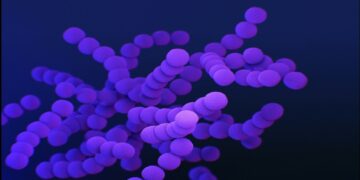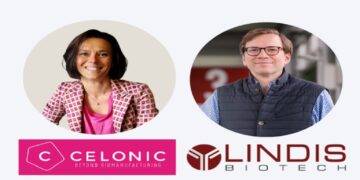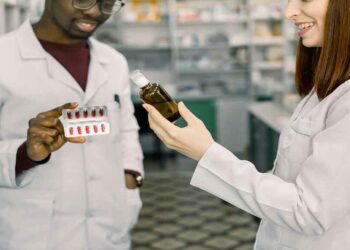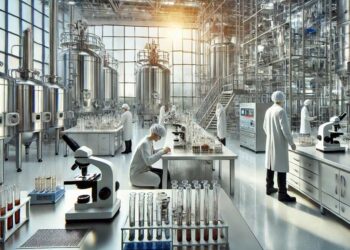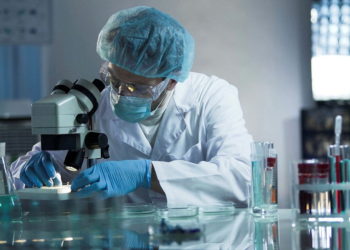Although we may disagree about the precise costs of bringing novel therapies to market, and even what factors contribute to those costs, it is clear that they have spiraled out of control. Their sporadic escalation well into ten figures necessitates returns that can render entire demographics refractory to initiating or continuing treatments, with grave societal costs that are even harder to quantify. Moreover, this trend coincides with the growth of an aged population susceptible to cancers and degenerative disorders in ever-higher numbers and for much longer post-retirement periods than was previously possible.
Modern medicine, informed by molecular technologies and the completion of the human genome, has delivered a biological therapy revolution, with highly effective and specific monoclonal antibody treatments that provide symptomatic relief from many cancers, autoimmune and other chronic disorders. However, for conditions resistant to treatment and with complex and disputed causes, cell replacement therapies emergent from regenerative medicine research provide attractive palliative or curative options, improvements in cost and therefore accessibility. This fully depends on the promise of small molecule inhibitors playing a starring role.
The basic paradigm of cell replacement therapy proceeds as follows: 1) identify a stem or progenitor cell type with adequate renewal and plasticity properties; 2) define conditions to purify it or train its differentiation to an organ-specific cell type; and 3) optimize transplantation, engraftment, survival and function. The long-standing epitome of this strategy is heterologous transplantation of bone marrow-derived hematopoietic stem cells to treat leukemias. It is a fraught and invasive procedure for donor and patient, and one-to-one matching inevitably raises issues of immunogenicity and scalability. However, its success as a therapy argues that the general approach can be modified and scaled to suit any disorder driven by loss or compromise of a defined cell type. Hence, research laboratories have vastly improved their understanding of differentiation and the narrowing of specificity, from progenitors to organ-like systems. Investigators have refined generation of putative therapeutic cell types in murine and human models of homeostasis and disease, from hematopoietic lineages to cardiomyocytes to pancreatic beta cells. The concomitant ability to reprogram seemingly mature and fate-restricted cells back to a stem-like state has aided the cause by providing potentially unlimited source material.
The serious ethical quandaries and restrictive regulations that arose with the dawn of the 21st century around use of human stem cell lines were made quaint by discoveries reported in 2006 by the Yamanaka group1, and the rise of somatic cell reprogramming that began with the OSKM four-factor approach. Mature fibroblasts can be converted to induced pluripotent stem cells (iPSCs), restoring the ability to differentiate to all three germ layers and their derivatives, using retroviral delivery of key transcription and regulatory factors (OCT4, SOX2, KLF4, c-Myc). This discovery did not just bypass ethical and procedural dilemmas. It also prompted seismic shifts in multiple fields of biomedical science, notably regenerative medicine, which added to its cell replacement therapy paradigm the prospect of superficially obtaining cell samples from patients and using them to create patient-specific iPSCs. Differentiating and expanding them ex vivo can validate in principle an inexhaustible well for safe autologous transplantation, addressing concerns over immunogenicity, sourcing and scale.
But as the window opened to a tireless source of progenitor cells, the particular nature of reprogramming introduced its own narrowing apertures of scale, safety and medical applicability. First, it is a reproducible but fickle process, with a typical conversion efficiency of only between 0.1 – 1 percent. Second, the induction of gene expression by exogenous viral constructs carries risks of infection, integration, mutability and tumorigenicity. However, other research groups utilized reprogramming’s mechanistic principles to begin replacing gene constructs with small molecule inhibitors (SMIs) in various contexts. Substitution with SMIs introduces a higher degree of control and predictability, with the ability to finely control dosage and timing, vastly reduce costs through chemical synthesis reactions in comparison to biological production workflows, and impart a degree of reversibility and plasticity via periodic treatment and removal of cell-permeable compounds.
Mechanistically, iPSC reprogramming modulates activity of Wnt and transforming growth factor-beta (TGF-β) signaling pathways, which are both important regulators of developmental patterning. It also promotes chromatin accessibility through epigenetic modification, and cellular metabolism via autophagy, unlocking cells’ receptivity to new instructions. Therefore, investigators screened chemical cocktails to impart these combined functions and achieve a level of stemness equivalent to OSKM. In 2013 Hou and colleagues replaced the SKM portion of OSKM with VC6T in mice2,4, consisting of SMIs for glycogen synthase kinase (CHIR99021), TGF-β (616452) and histone deacetylase and demethylase (valproic acid and tranylcypromine). They followed this discovery by identifying inhibitors to substitute for OCT4 expression, and enhance efficiency, in part by targeting retinoic acid signaling (Table 1). In 2022, Guan et al achieved SMI-mediated reprogramming in human cells by additionally targeting inflammatory responses through inhibition of the janus kinase (JNK) pathway3,4.
What, then, is the best path forward for using SMIs to translate encouraging research results into medically actionable procedures? What degree of multipotency is adequate, or excessive, for a starting cell type? What disease state may have a good chance of becoming a standard bearer for a new paradigm of precision and regenerative medicine?
The answers remain to be debated and agreed upon for several years to come, but research into neurodegeneration and Parkinson’s disease may provide a great example from which to start. Parkinson’s disease (PD) is a neuromuscular degenerative disorder characterized by rigidity and tremor associated with the progressive loss of dopaminergic (DA) neurons in the substantia nigra region of the midbrain. Although deep brain stimulation and administration of levodopa can restore some function, patients eventually become refractory to amelioration. Consequently, the prospect of therapeutically replacing the lost cell type is an attractive option in the menu of potential long-term care or cure solutions.
Neural induction of multipotent cells borrows from some of the same pathways as reprogramming, and so some of the same classes of SMIs can be repurposed to promote ectoderm and its differentiation at the expense of mesoderm and endoderm lineages. Although iPSCs are highly valued in research fields for their pluripotency, it is simultaneously a mark against them in their capability to form teratomas. However, recent research has shown induction of early and mature neural lineages from several other types of progenitor cells, restoring function in neurotoxin-mediated PD mouse models. These include induction from mesenchymal (MSCs) and spermatogonial stem cells (SSCs), with conversion efficiencies of anywhere between 20 and 90 percent5,6. Additional work has optimized relatively simple SMI-based protocols for direct transdifferentiation of mature somatic cells such as fibroblasts to neural stem and progenitor cells or even neurons that express markers of DA maturation5,7. Some key SMIs that have been used in induction, conversion and differentiation are noted in Table 1.
Table 1. A partial list of common small molecules used in reprogramming, neural induction, and conversion to dopaminergic neurons in cell culture.
| Compound | Biological Activity | iPSC Reprogramming | Neural Induction to stem/progenitor cells (NSC/NPC) | Conversion to DA neurons (cell source) |
| Valproic acid | HDAC inhibitor | + | + | + (SSC) |
| CHIR99021 | GSK inhibitor | + | + | |
| 616452 | TGF-β inhibitor | + | ||
| Tranylcypromine | H3K4
demethylation inhibitor |
+ | ||
| Forskolin | Adenylate
cyclase activator |
+ | + | + (SSC) |
| 2-methyl-5-hydroxytryptamine | 5-HT3 agonist | + | ||
| D4476 | CK1 inhibitor | + | ||
| DZNep | EZH2 inhibitor | + | ||
| TTNPB | Retinoic acid analog | + | ||
| AM580 | Retinoic acid receptor agonist | + | ||
| Repsox | TGF-β inhibitor | + | ||
| LDN193189 | BMP inhibitor | + | ||
| A83-01 | Endoderm inhibitor | + | ||
| SP600125 | JNK inhibitor | + | ||
| Go 6983 | PKC inhibitor | + | ||
| Y-27632 | Rho Kinase inhibitor | + | ||
| Dorsomorphin | BMP inhibitor | + | + (MSC) | |
| SB431542 | TGF-β inhibitor | + (MSC, SSC) | ||
| SMER28 | Autophagy enhancer/
PI3K inhibitor |
+ (MSC) | ||
| HPI-1 | SHH inhibitor | + (F) | ||
| Neurodazine | Neural inducer | + (F) | ||
| Retinoic acid | Vitamin A metabolite | + (SSC) |
Of these cell types, SSCs may have the best combination of renewability, plasticity, safety, and sensitivity to the supportive niche within the eventual transplant, and therefore perhaps the highest capacity to properly engraft and promote new synapse formation and physiological function. The obvious caveat here is that although men are approximately twice as susceptible to PD as women, a sex-specific cell type is intrinsically not the most universal candidate.
Regardless, in the end the simplest path to conversion and expansion/maintenance with the highest efficiency should win the day for the best cell source and procedure, especially if cells remain viable and functional post-transplant. Additional work needs to be done to modify baseline culture conditions that currently require recombinant growth factors, cytokines, and neurotrophic factors such as FGF8 and GDNF. Finally, if a disease like PD is to serve as a bellwether, then the complexities of its etiology must also be taken into consideration. Restoration of DA neurons may not be adequate to overcome other aspects of its progression or epidemiology, such as neuronal transmission of misfolded alpha-synuclein protein aggregates, neurotoxicity and inflammation, and the difficulty of achieving early diagnoses when intervention is more likely to be effective.
References
- Takahashi K, Yamanaka S. Induction of pluripotent stem cells from mouse embryonic and adult fibroblast cultures by defined factors. Cell 126(4): 663 (2006).
- Hou P et al. Pluripotent stem cells induced from mouse somatic cells by small-molecule compounds. Science 341(6146): 651 (2013).
- Guan J et al. Chemical reprogramming of human somatic cells to pluripotent stem cells. Nature 605: 325 (2022).
- Kim Y et al. Small-molecule-mediated reprogramming: a silver lining for regenerative medicine. Exp Mol Med. 52(2): 213 (2020).
- Alexanian A et al. Dopaminergic progenitors generated by small molecule approach survived, integrated and promoted functional recovery in (6-OHDA) mouse model of Parkinson’s disease. J Neurol Sci. 465: 123188 (2024).
- Yang H et al. Generation of functional dopaminergic neurons from human spermatogonial stem cells to rescue parkinsonian phenotypes. Stem Cell Res Ther. 10(1): 195 (2019).
- Sorraska N et al. Rapid induction of dopaminergic neuron-like cells from human fibroblasts by autophagy activation with only 2 small molecules. 3 Biotech 14(4): 115 (2024).
Author:
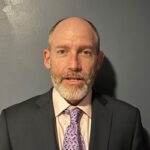 Brandoch Cook,
Brandoch Cook,
Enzo Life Sciences
Brandoch Cook, Ph.D, Enzo Life Sciences .
Enzo Life Sciences










